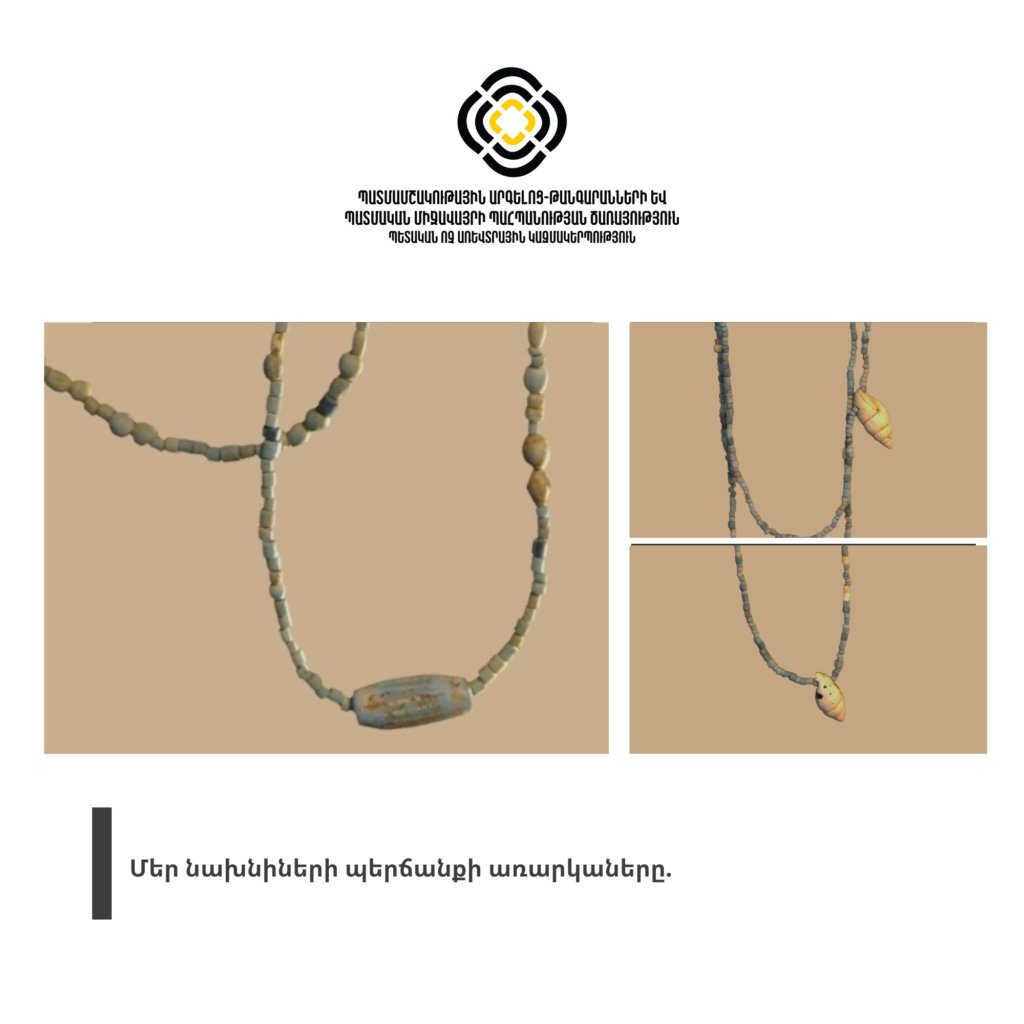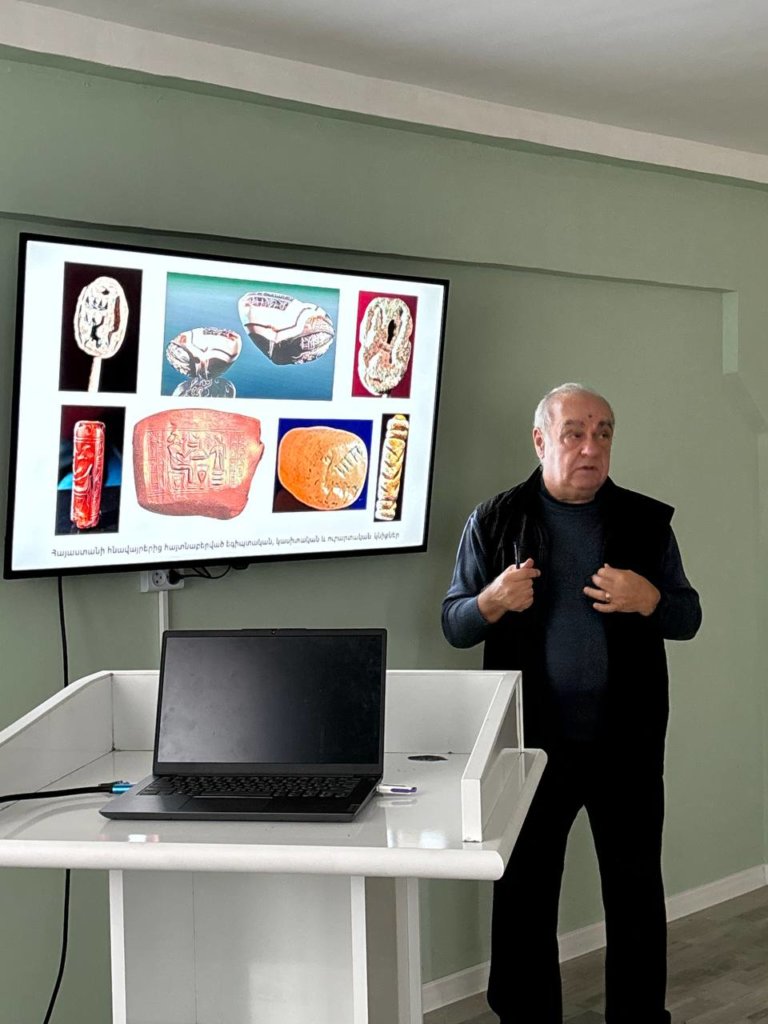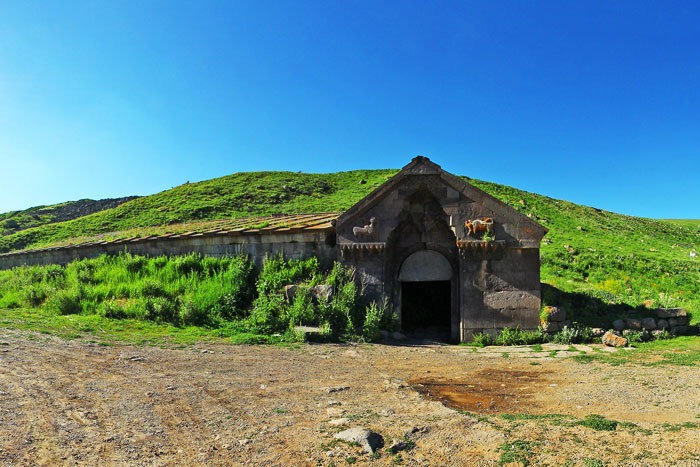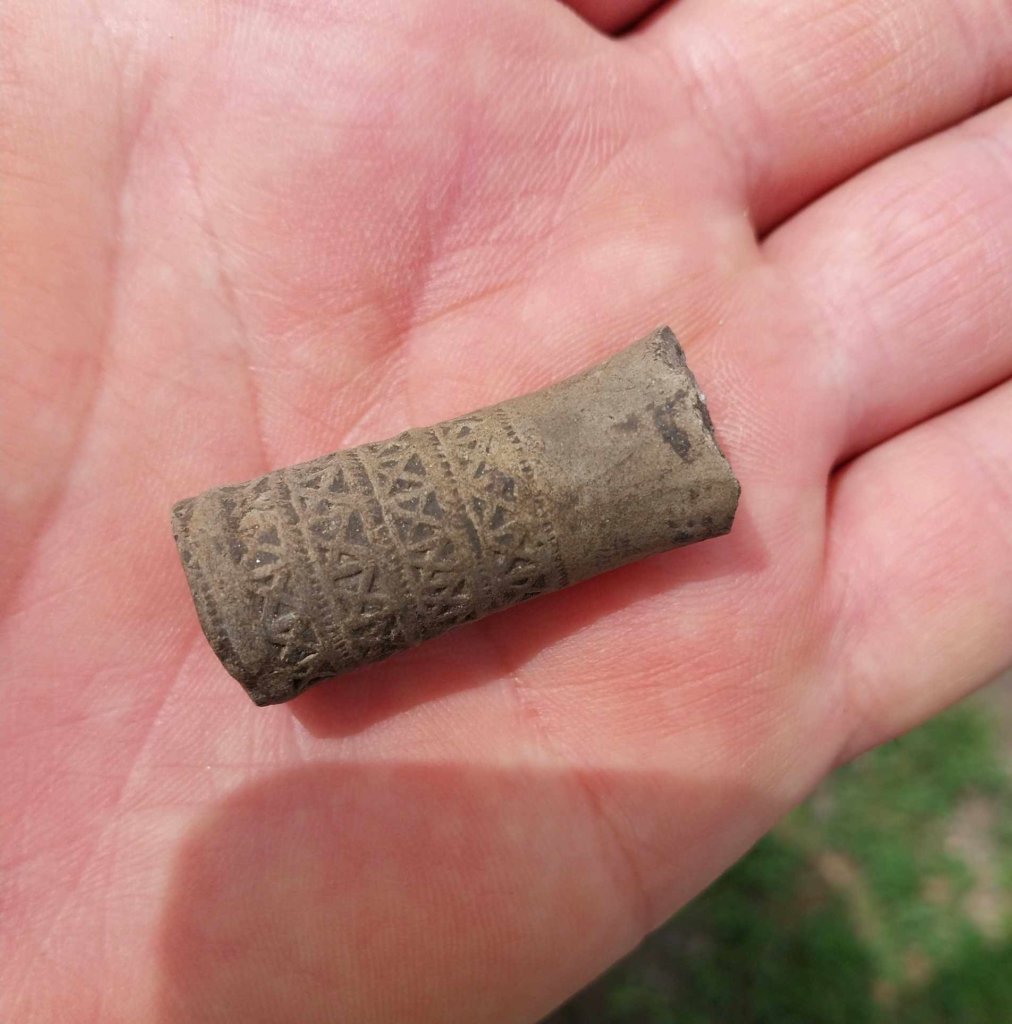This set of beads, which seems new at first glance, has a history of centuries. They have been discovered from the ancient sites “Pali Tak” and “Koghi Tak” located in the middle of Karmirgyugh and Sarukhan settlements of Gegharkunik region. The beads date back to the XI-IX centuries B.C. In the 1980s, the joint expedition of the Institute of Archaeology and Ethnography NAS RA and the Erebuni historical-archaeological reserve-museum, led by archaeologist, scientist Ashot Piliposyan, carried out rescue excavations in the area of the mentioned tomb site. This bead from the archaeological collection of the Sarukhan necropolis “Pali Tak” has a special significance. It helps to form an idea about the objects of grandeur used by our ancestors. Materials related to the times of Van’s reign are well presented in this ancient site.
This collection also contains rare necklaces made of light-yellow and greenish cylindrical small beads, which are made of bluish clay solution. In the central part of the thread, and also at an equal distance on the right and left side of the center, three small shells are strung.
Early Iron Age bead set is made of white clay mortar, small cylindrical beads made of blue and yellowish glass, dated back to the XI-IX centuries B.C., length 56.0 cm.










